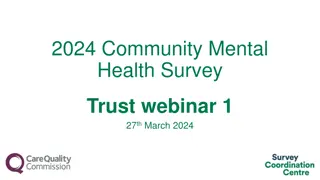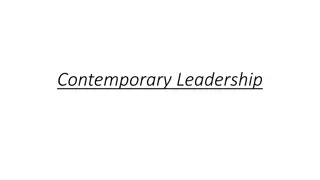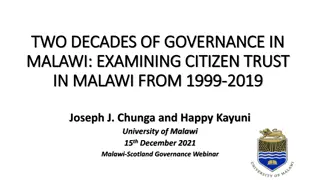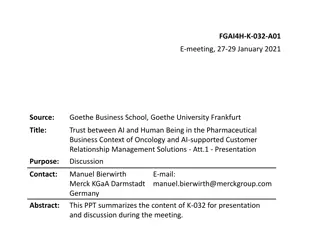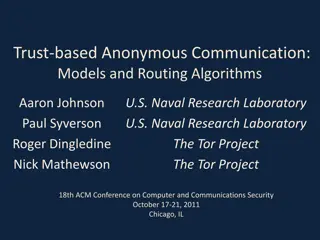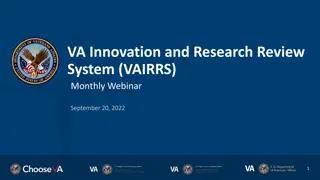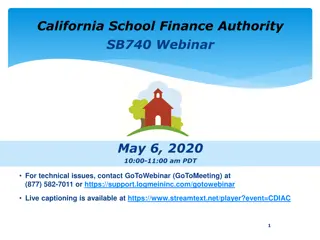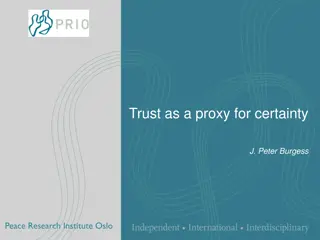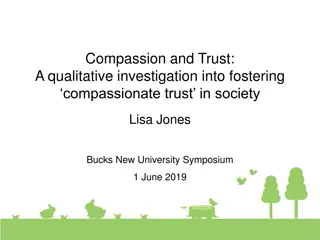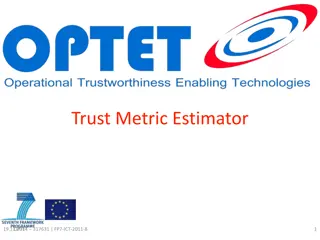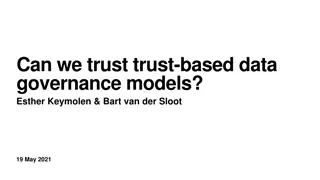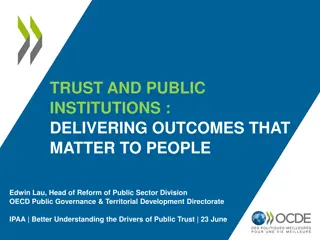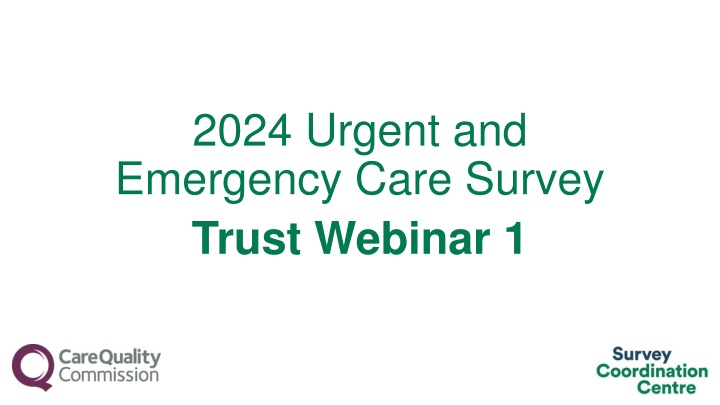
Enhancing Urgent and Emergency Care Survey Methods for Better Data Collection
Explore the improvements in data collection methods for the Urgent and Emergency Care Survey, including a mixed-mode approach, online surveys, SMS reminders, and more. Discover how these changes aim to boost response rates and data representativeness for a comprehensive understanding of patient experiences.
Download Presentation

Please find below an Image/Link to download the presentation.
The content on the website is provided AS IS for your information and personal use only. It may not be sold, licensed, or shared on other websites without obtaining consent from the author. If you encounter any issues during the download, it is possible that the publisher has removed the file from their server.
You are allowed to download the files provided on this website for personal or commercial use, subject to the condition that they are used lawfully. All files are the property of their respective owners.
The content on the website is provided AS IS for your information and personal use only. It may not be sold, licensed, or shared on other websites without obtaining consent from the author.
E N D
Presentation Transcript
2024 Urgent and Emergency Care Survey Trust Webinar 1
Agenda o Summary of UEC 2022 pilot o Data collection o Sampling o Redesign of questionnaire o Other elements being explored for the 2024 Survey o Boosting response rate o Key dates 2
Summary of UEC 2022 Pilot UEC22 pilot was conducted to assess the feasibility of transitioning the UEC Survey to a mixed-mode approach. Findings Mixed-mode method yielded higher response rates than the postal method for Type 1 and Type 3 patients. Mobile number availability played a crucial role in response rates and online responses. Mixed mode improved data representativeness for most demographic groups. Exceptions included males and individuals from mixed ethnic backgrounds. Patients found the online survey straightforward and quick to complete. SMS reminders effectively encouraged online participation, with smartphones being the primary device. Future online surveys should prioritise mobile-friendly design. The pilot demonstrated the feasibility of moving to a mixed-mode method. 3
Data collection approach o Mixed mode data collection method: o Online survey, paper questionnaire o Push to web approach o Inclusion of QR codes alongside web address for survey on cover letters o Introduction of SMS text reminder messages o Online survey (mobile first, responsive design) o Centralised survey offered o BSL offered o Translations provided (languages TBC) o Multi-language sheet, inclusion of QR codes for translated surveys o Paper questionnaire: o 8 pages o Design similar to UEC 2022 o A number of question changes are likely o Large Print, Braille and Easy Read provided 5
Data collection approach o Contact approach: o Paper letter and SMS contacts (example dates) o Mailing 2 is five working days after mailing 1 o Mailing 3 is ten working days after mailing 2 o SMS texts are 3 working days after each mailing Example mailing dates Week 1: Monday 15/04/2024 Week 1: Thursday 18/04/2024 Week 2: Monday 22/04/2024 Week 2: Thursday 25/04/2024 Week 4: Tuesday 7/05/2024 Contact type Contact 1: Letter with URL / QR code Contact 1.1: SMS despatched Contact 2: Letter with URL / QR code Contact 2.1: SMS despatched Contact 3: Letter (No URL / QR code) and mail questionnaire Contact 3.1: SMS despatched Week 4: Friday 10/05/2024 6
Sampling 7
Sampling Stratified random sample of patients aged 16+ o Trusts submitting Type 1 only sample: o Draw 1250 patients who attended in February 2024 only. o Trusts submitting Type 1 and Type 3 samples: o Draw 950 Type 1 patients who attended in February 2024 and 580 Type 3 patients who attended in February 2024 (this is to be confirmed). o Type 3 are permitted to sample back to January 2024 if they are not able to meet the required sample size in February alone. o Trust sample size to be reviewed - aiming to increase Type 3 sample to allow disaggregation of Type 3 data. o Please note: You may only submit a Type 3 sample if your Type 3 departments are directly run by your trust. Type 3 departments that are run by another provider must be excluded. o Trusts submit a combined sample and mailing file to contractors. o Full details will be in the Sampling Instructions. 8
Sampling: new variables o NHS Number: o We are applying for section 251 approval for NHS numbers to be provided for all patients in the sample file. o This is to enable contractors to run centralised DBS checks for all their clients. o NHS Number may be used for linkage to ECDS. o Day and Month of birth o Also be added to the sample this year to allow for DBS checks o Year of birth already collected o Mobile phone number o To send patients SMS text reminders to complete survey o Other potential variables: o Department name eg A&E, UTC, MIU, UCC. o ICD 10-Treatment Codes (Reason for Attendance) o Treatment Function Code (Service Patient Has Been Admitted To) o Urgent and Emergency Care Acuity o To indicate the acuity of patient s condition on the urgent and emergency care initial assessment date and emergency care initial assessment timestamp 9
Sampling: New variables your feedback o Questions for trusts 1. What variable can be used that will indicate the medical condition that the patient attended the emergency department for? a) ICD 10-Treatment Codes (Reason for Attendance)? b) Treatment Function Code (Service Patient Has Been Admitted To)? 2. Will the Urgent and Emergency Care Acuity variable provide us with data on the severity of the patient s condition? 3. Are we able to identify patients who attended the ED due to a mental health issue? 4. Will you be able to provide data for these sampling variables in your UEC sample? 5. Could there be any issues in providing this data? a) I.e. availability of data, data quality, or delays in obtaining data? 10
Sampling: Exploring Enhanced Reporting for Type 3 Disaggregation of Type 3 services o This will provide further granularity in results o We are reviewing Type 3 data volumes / attendance figures for February 2023 and 2022. o SCC will update survey handbook, sampling instructions, and sample declaration to reflect any sampling changes. o Type 3 sample size may need to be increased to allow for the disaggregation Questions for trusts: 1. Do trusts believe it will be possible to disaggregate Type 3 services? ie will it be possible to include a new sample variable to capture whether the Type 3 service is a UTC, UCC or MIU? What are trust s thoughts on a possible Type 3 sample size increase (to enable this disaggregation)? a) If it were increased, what level of increase would trusts be comfortable with? 2. 11
Centralised DBS checks We are likely to adopt centralised DBS checks o New variables may need to be required. As mentioned previously, NHS number, and full Date Of Birth. o The use of NHS numbers and full Date of Birth in YYYY/MM/DD format enables contractors to run centralised DBS checks for clients. o Contractors with DBS check capabilities can run checks during fieldwork on behalf of trusts. o This eliminates the need for trusts to conduct DBS and local checks before mailing two and mailing three. o Trusts are still responsible for initial DBS checks when drawing the initial sample. 12
Changes for the 2024 UEC Survey: Redesign of the questionnaire Stakeholder priorities: Patient Pathways Understanding how patients access services before and after their emergency department attendance is seen as a key priority for the 2024 survey. o Priority areas include understanding why patients choose to visit the Emergency Department (ED) and whether this is due to the convenience it offers or if are there barriers to people accessing a more appropriate service e.g. GP leading them to go to urgent care. o Broadening the survey to include access to other primary care services, i.e. mental health or dental services. o Collecting data on the actual reasons for attendance, the setting they attended, and what they attended with. 14
Changes for the 2024 UEC Survey: Redesign of the questionnaire Stakeholder priorities: Discharge / Reattendance o Interest in the discharge of patients from care homes. o Exploring how information about medication is provided prior to discharge. o Understanding the clarity and utility of information provided to patients to help them care for their condition at home if needed o Considering if patients received the care and support they needed after leaving A&E and its impact on reattendance. o Whether asking about reattendance at the same A&E is useful (as people can attend another A&E nearby). o Interest in reasons for reattendance are people reattending due to not having their needs met the first time 15
Changes for the 2024 UEC Survey: Redesign of the questionnaire Stakeholder priorities: Waiting times / Ambulance Handover o Focusing on the quality of care and support patients receive while waiting, including medication management and updates on waiting times. o Clarifying questions about examination and the waiting time point they refer to (eg triage or when fully assessed?). o Capturing data on the quality of care while patients are waiting in ambulances for handover. 16
Changes for the 2024 UEC Survey: Redesign of the questionnaire Stakeholder priorities: Patient safety / mental health patients o Exploring change to the 2022 patient safety question for gathering patient safety data. o Considering questions related to patients with communication needs o Deciding whether to explore reasons for patients with mental health crises attending the ED or the patient experience of mental health patients. o Consideration of adding 'Mental Health Crisis Team' as a response option when asking patients what other services they have contacted. o Identifying patients with mental health conditions based on ICD10 codes or self-reporting. o Examining previous attempts to access mental health services. 17
Other elements being explored for the 2024 Survey 18
Boosting Response Rate Stakeholder Suggestions o Putting up posters in trusts about the survey. o Providing information on service improvement. o Engaging ICBs (Integrated Care Boards) for communications. o Utilising 'You said, we did' for demonstrating impact. o Providing information on how trusts have used previous survey data. Impact materials we are considering offering to trusts o Publicity posters (pre fieldwork) o Press release template (pre fieldwork) o Social media cards (pre and during fieldwork) o Website banners (During fieldwork) o Infographic (post fieldwork) Question for trusts: 1. 2. Do you think any of these stakeholder suggestions will be good to take forward? Do you have any other ideas for enhancing patient engagement and increasing the UEC24 survey response rate in your NHS Trust? Do you have any thoughts on the materials that we may offer? 3. 19
Key dates Activity Dissent posters published on website Section 251 Approval Publication of sampling materials 2nd Trust webinar (confirmation of changes) Dissent posters to be displayed by Ethics Approval Publication of patient facing materials Trusts draw samples Sample checking Fieldwork (13 weeks) Results: publication / local results Date Early December 2023 Late December 2023 Late December 2023 Late January 2024 February 2024 (January for Type 3) Late February 2024 Late February 2024 March 2024 March and April 2024 Mid April 2024 to late July 2024 TBC 20
Any further thoughts or have any queries, please contact at emergency@surveycoordination.com 22


